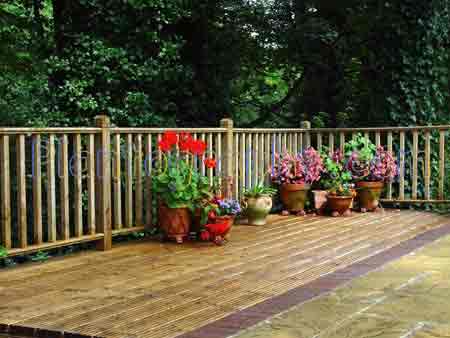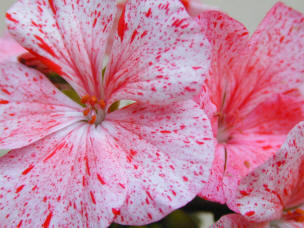Tall Evergreen Shrubs for the Garden. 1.8m plus.
Many shrubs that grow tall also grow bushy – a fact sometimes overlooked in the quest for screening or privacy. Defining what a tall shrub is can be fraught by problems, for no two gardens (or gardeners) are alike. Some would consider 6 feet (1.8m) to be tall; for others, that would be a medium sized shrub.
This list is by actual physical height that can be reasonably expected in around ten years of growth. Some shrubs will reach full mature size in just a few years, whilst others will eventually get there in a more leisurely timeframe. All of the shrubs mentioned, will carry on growing – sometimes well in excess of the 1.8m guide.
To give an idea on size, the highest fence panels are normally 1.8m tall. So this list of shrubs will extend over the top of the fence within 10 years maximum.
There are a wide range of conifers – NOT Leylandii please – that will qualify as tall evergreens – a different article.
Many evergreen shrubs also flower, but those are covered elsewhere. In this list the predominant feature is the fact that the shrubs are evergreen – maybe with incidental flower interest. Many will be borderline cases in that respect. For instance, Viburnum tinus is sought for being a winter flowering shrub, but is also a superb, if uninteresting evergreen.
Tall Evergreen Shrubs
Laurel
Prunus laurocerasus - the Cherry Laurels – have to be at the top of the
list because of their varied evergreen foliage. They will give dense
cover and a short spell of white ‘candle’ flowers for those that are not
clipped. They will easily attain a height of 1.8m and beyond, and a
spread of approx 60% of the ultimate height. Can be pruned hard, or
clipped for a more formal shape.
Cotoneasters
The
Cotoneasters are varied with deciduous, low and spreading types –
important to get the right variety. Some – whilst tall growing – will
develop into small trees with bare lower branches. This is useful if you
want to plant shade loving plants beneath. The best of the batch that
will remain clothed down to ground level are Cotoneaster ‘Cornubia’ –
which will have a spread almost comparable to its height; Cotoneaster
lacteus is similarly arching, so clothed to the ground. Both have the
added attraction of reasonable white flower display in summer followed
by masses of red berries late into winter.
Viburnum.
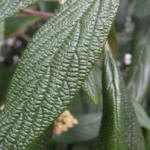 Viburnum
tinus would seem the obvious choice for evergreens, but we will leave
that for the list of flowering evergreens. Instead I will opt for that
rarely-planted Viburnum rhytidophyllum – the large leaved Viburnum. It
is sometimes referred to as semi-evergreen. It is not, it is fully
evergreen. 1.8m is absolutely no problem in about five years. The
wrinkled spear-like leaves – leathery and glossy – are sometimes 8 – 10
in long. Yes, it flowers as well, but they can be largely ignored in favour of the spectacular foliage. Remember the name, because visitors
to your garden will want to know what it is.
Viburnum
tinus would seem the obvious choice for evergreens, but we will leave
that for the list of flowering evergreens. Instead I will opt for that
rarely-planted Viburnum rhytidophyllum – the large leaved Viburnum. It
is sometimes referred to as semi-evergreen. It is not, it is fully
evergreen. 1.8m is absolutely no problem in about five years. The
wrinkled spear-like leaves – leathery and glossy – are sometimes 8 – 10
in long. Yes, it flowers as well, but they can be largely ignored in favour of the spectacular foliage. Remember the name, because visitors
to your garden will want to know what it is.
Bamboo
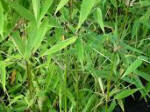 Fargesia
murieliae is the one I would opt for. It is clump forming, fully
evergreen and hardy. It does not spread as do some of the other bamboos.
Most of the foliage tends to be at the top of the plant, but it can be
fully clothed to the ground if growing well. 1.8 is easy in 5 years,
with a not to problematic spread of a metre or so when mature.
Fargesia
murieliae is the one I would opt for. It is clump forming, fully
evergreen and hardy. It does not spread as do some of the other bamboos.
Most of the foliage tends to be at the top of the plant, but it can be
fully clothed to the ground if growing well. 1.8 is easy in 5 years,
with a not to problematic spread of a metre or so when mature.
Pyracantha
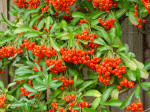 The
firethorn has to be included as an evergreen – though firstly thought of
as a berry shrub – for it brings a new dimension. That of thorns! It has
small, dark green glossy leaves – which sometimes get scorched by drying
winds – but soon recovering. It is best against a fence with support,
rather than as a free standing shrub. The thorns will repel any unwanted
visitors, and often cause problems for unwary gardeners!
The
firethorn has to be included as an evergreen – though firstly thought of
as a berry shrub – for it brings a new dimension. That of thorns! It has
small, dark green glossy leaves – which sometimes get scorched by drying
winds – but soon recovering. It is best against a fence with support,
rather than as a free standing shrub. The thorns will repel any unwanted
visitors, and often cause problems for unwary gardeners!
Holly – I am skipping for it is really a single stemmed small tree.
Photinia
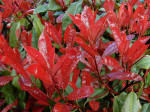 The
Red Robin
Shrub is a super addition to any evergreen list, and the brilliant
red young foliage gives rise to its descriptive common name. A little
slow to get to 1.8, but will certainly do it within our 10 year time
frame. Slightly open habit of growth unless clipped, but still a good
screening shrub which will top the 1.8m, bringing it on to this page,
The
Red Robin
Shrub is a super addition to any evergreen list, and the brilliant
red young foliage gives rise to its descriptive common name. A little
slow to get to 1.8, but will certainly do it within our 10 year time
frame. Slightly open habit of growth unless clipped, but still a good
screening shrub which will top the 1.8m, bringing it on to this page,
Bay
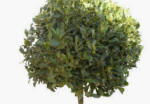
Laurus nobilis. Forget the clipped specimens in pyramidal or globular
shapes. Here we talk of the Bay as a free standing evergreen shrub.
Hardly needs description as an ornamental shrub, but little realized
that it can soon get to 1.8m and well beyond. A redeeming factor being
that it can be clipped or hacked even to keep it to size. The bay is a
dense evergreen with dark foliage, that sure to block out any
undesirable view.
Elaeagnus
 The
Oleasters are normally grown for their variegated foliage, but one that
deserves to be included here, and would have a space in any garden I
built – is Elaeagnus ebbingei. The upper surface of the leather leaves
is grey green – almost metallic in appearance – whilst the undersides
exhibit downy silver to cream colour which makes them doubly attractive
in a light breeze. Other than the fact is is a good evergreen, with an
upright then spreading habit, it has small insignificant tubular flowers
– not often but noticeable by their fragrance. A scent that will hold
its own with most other scented flowers. This happens in November –
hence the fact the flowers are rarely sighted!
The
Oleasters are normally grown for their variegated foliage, but one that
deserves to be included here, and would have a space in any garden I
built – is Elaeagnus ebbingei. The upper surface of the leather leaves
is grey green – almost metallic in appearance – whilst the undersides
exhibit downy silver to cream colour which makes them doubly attractive
in a light breeze. Other than the fact is is a good evergreen, with an
upright then spreading habit, it has small insignificant tubular flowers
– not often but noticeable by their fragrance. A scent that will hold
its own with most other scented flowers. This happens in November –
hence the fact the flowers are rarely sighted!
Best Selling Gardening Products
Popular Gardening Sections
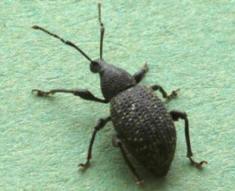
Problems
Identify Weeds in The Garden - How to deal with weeds. Diseases and Pest which harm your garden and plants, learn how to prevent, deter and erradicate your garden problems.
Garden Problems
Pruning
Pruning Guide. Shrubs flower better with correct pruning. Many illustrations and examples of what to do - and when. Includes evergreens, roses, flowering shrubs, spring flowering shrubs and pruning for stem effect. This is our most viewed and comprehensive section,
Pruning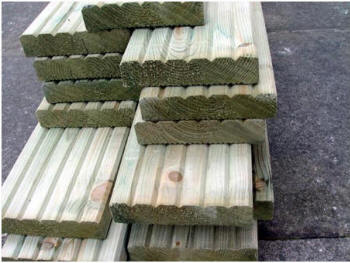
Gardening Businesses
Gardening Businesses listed in the UK counties and USA states. County and State Listings of businesses involved in Garden supplies and services. If you wish to be added to the Directory, please send us your information. Having problems, use the search box
Businesses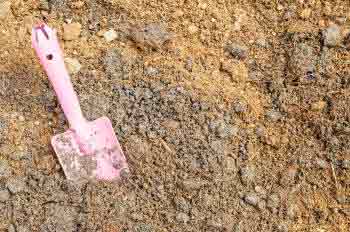
Gardening
In this section you will learn about Gardening Basics, Containers, Landscaping, Propagation and Soil.
Gardening
Gardening Gifts
Gardening Gifts and Reviews, Read Before you Buy
- Gardening Gifts Ideas
- Gifts For Her
- Gifts For Men
- Power Tool Gifts
- Cheap Gifts
- Personalised Gifts
- Wildlife Gifts
- Family Gifts

